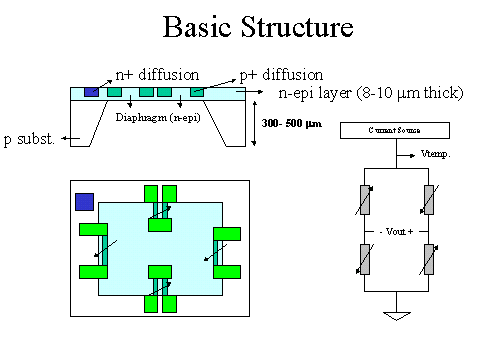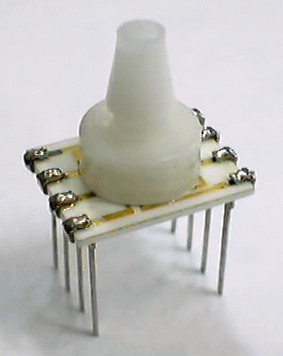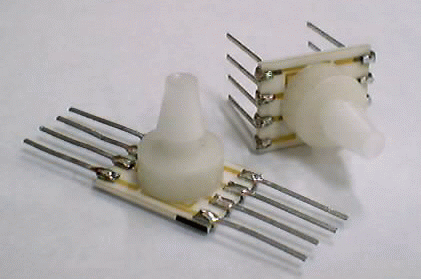
Piezoresistive
Pressure and Temperature Sensor Cluster
The sensing material in a piezoresistive pressure sensor is a diaphragm formed on a silicon substrate, which bends with applied pressure. A deformation occurs in the crystal lattice of the diaphragm because of that bending. This deformation causes a change in the band structure of the piezoresistors that are placed on the diaphragm, leading to a change in the resistivity of the material. This change can be an increase or a decrease according to the orientation of the resistors.
In this project, our aim is to produce low-cost piezoresistive pressure sensors with variuos sensitivities for industrial applications. This variation in the sensitivity of the sensor will enlarge the application areas of the sensors. Those sensors will also include temperature sensors. With those, tem perature information can be obtained and can be used for temperature compensation purposes.
APPLICATION AREAS
ADVANTAGES
BASIC PROCESSING STEPS

For a typical piezoresistive pressure sensor, the piezoresistive elements
(i.e., the diffused resistors) are located on an n-type epitaxial layer
of typical thickness 2-10m m. The epitaxial
layer is held by a p-type substrate. The pressure sensitive diaphragm
is formed by silicon back-end bulk micromachining. For this process,
anisotropic etchants like TMAH and KOH are be used.
FABRICATION OF THE SENSOR
|
|
|
Figure on the left shows the alumina substrate with a hole at the middle.
This hole is required for differential pressure measurements and the air
pressure is always applied to the back side of the sensor via this hole.
Figure on the right shows the sensor and the substrate connected together.
also, the wire bonding is done so that the sensor is ready for connection
with the discrete readout circuitry.


The packed pressure sensor that is ready for testing. The cap that is used as a cover and as a pressure port is seen.
FUTURE GOALS